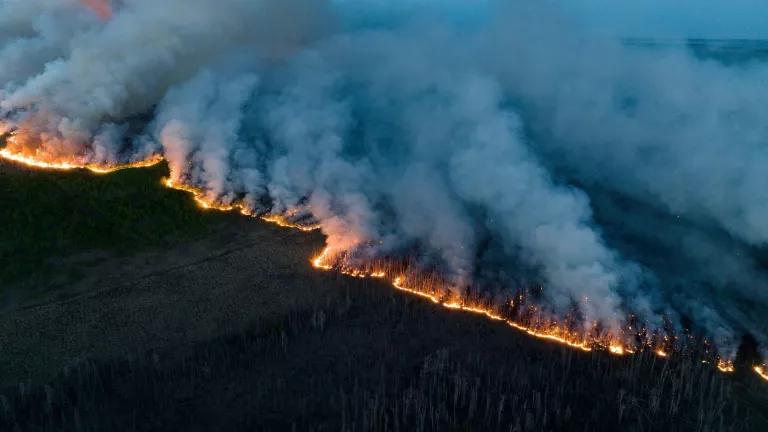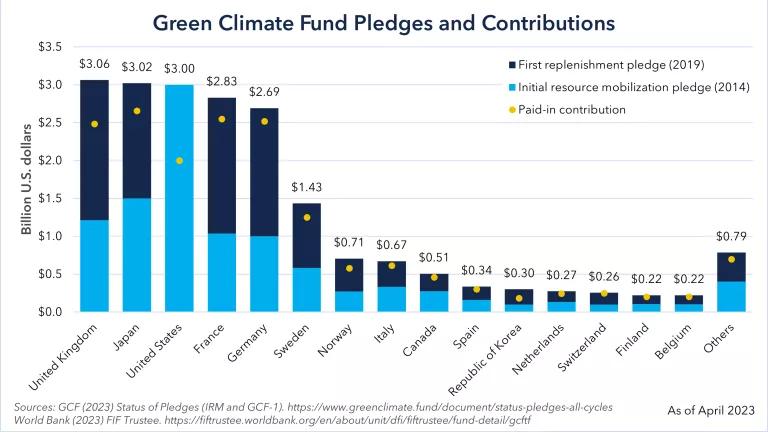House Climate Plan Offers Bold Vision for the Future
This is clearly the most detailed, robust congressional plan on climate change we have seen to date and we hope Congress will act on its solutions quickly. The big picture take away is that this plan recognizes the need for a comprehensive approach that bends the whole of government and private action toward being part of the solution not being part of the problem.
The House Select Committee on the Climate Crisis just released a comprehensive climate action plan that arrives at a critical moment in our country. We stand at a reckoning point in history where long suppressed needs for racial justice, economic equality, public health and climate action have finally come to the forefront. As many Americans self-reflect, it’s becoming clearer that these crises are deeply interwoven. The climate crisis has magnified social and political inequities, but those inequities have also undermined our ability to address the climate crisis. If we are serious about addressing one, then we must do so in a way that helps address them all.
That is why this plan's release is so timely. The solutions detailed in its 500-plus pages help put us on a path to achieving net-zero greenhouse gas emissions by the mid-century. And while benefiting all communities (nearly $8 trillion in benefits according to Energy Innovation), they will especially help address the legacy of discrimination, underinvestment, and pollution suffered by Black, Indigenous, and other communities of color. These solutions will create new economic opportunities for families that have for too long been one disaster away from ruin and help remove health disparities caused by pollution that have robbed opportunity from too many. This plan for addressing the climate crisis and building a cleaner future is also a plan for creating a better future for all.
One of the keys to building an equitable, just, and durable solution to the climate crisis is bringing together as many people as possible to be part of crafting the solutions. Here the Select Committee has done admirably, holding 17 hearings and 6 roundtables while also consulting with more than one thousand stakeholders and scientists and soliciting feedback from a diverse set of organizations. Hearing from environmental justice communities, tribal leaders, workers, local government representatives, scientists, businesses, investors, state officials, and more from across the country will form a broad foundation of support for the ideas within this report.
In the 32 years since climatologist James Hansen first told the U.S. Senate that carbon pollution was causing climate change, a wealth of solutions have been brought forward. The Select Committee has raised up the best solutions and linked them under 12 pillars.
- Pillar 1: Invest in Infrastructure to Build a Just, Equitable, and Resilient Clean Energy Economy
- Pillar 2: Drive Innovation in Clean Energy Development and Deep Decarbonization Technologies
- Pillar 3: Transform U.S. Industry and Establish Domestic Manufacturing of Clean Energy and Zero-Emission Technologies
- Pillar 4: Break Down Barriers for Clean Energy Technologies
- Pillar 5: Invest in America’s Workers and Build a Fairer Economy
- Pillar 6: Invest in Disproportionately Exposed Communities to Cut Pollution and Advance Environmental Justice
- Pillar 7: Improve Public Health and Manage Climate Risks to Health Infrastructure
- Pillar 8: Invest in American Agriculture for Climate Solutions
- Pillar 9: Make U.S. Communities More Resilient to the Impacts of Climate Change
- Pillar 10: Protect and Restore America’s Lands, Waters, Oceans, and Wildlife
- Pillar 11: Confront Climate Risks to America’s National Security and Restore America’s Leadership on the International Stage
- Pillar 12: Strengthen America’s Core Institutions to Facilitate Climate Action
This is clearly the most detailed, robust congressional plan on climate change we have seen to date and we hope Congress will act on its solutions quickly. Over the next few weeks, NRDC experts will be digging into the policy recommendations under these pillars. [We’ll link our blogs here once they are posted]. The big picture take away is that this plan recognizes the need for a comprehensive approach that bends the whole of government and private action toward being part of the solution not being part of the problem.
Action is already happening on pillar 1—investing in infrastructure. Later this week, the House will vote on the Moving Forward Act, H.R. 2, a bold infrastructure plan that will transform our transportation systems, transition the nation to cleaner sources of energy, invest in clean and safe water, protect workers, preserve nature, and address the challenges from a changing climate to our communities. The focus on climate change and inequality within H.R. 2 signals a real commitment to broad action on the part of the House majority - and we hope to see more of that before the end of the year.
Polls keep demonstrating that Americans are demanding climate action at record levels. New platforms have been proposed to demonstrate how we can successfully address the climate crisis together. NRDC supports the climate, justice, and equity goals of the Green New Deal. And we are proud to be part of alliances and forums committed to fighting for equitable and effective solutions. We have endorsed the BlueGreen Alliance’s Solidarity for Climate Action platform; a document that recognizes the link between economic security for workers and a livable environment. We are a signatory to the Equitable and Just National Climate Platform, which advances the goals of economic, racial, climate and environmental justice.
The Select Committee’s report builds off of those historic platforms and begins to translate their principles, priorities, and policies into federal action. Congress hasn’t had a comprehensive climate plan for over a decade but this report’s release means they are closer to once again attempting real action on the climate crisis, and this time with greater focus on equity and justice. Putting this comprehensive plan into action will reduce our dependence on fossil fuels and invest in a better future—putting more people to work in clean energy, reducing pollution in communities where it is the highest, and making our country more resilient to the challenges ahead.




